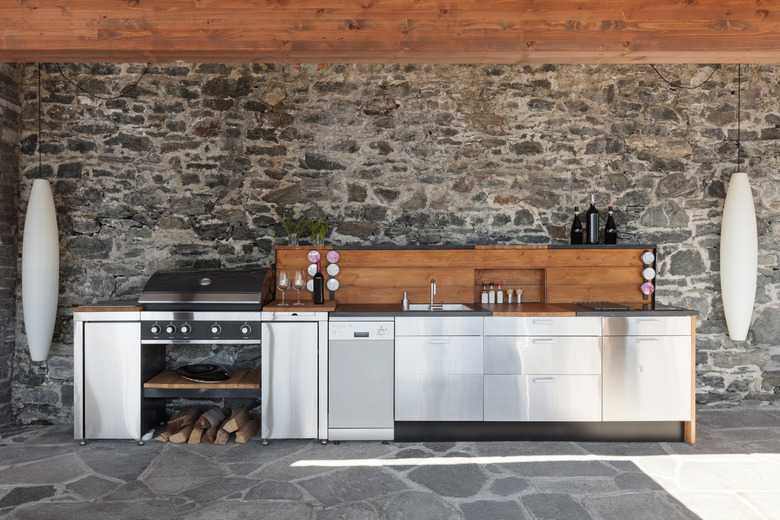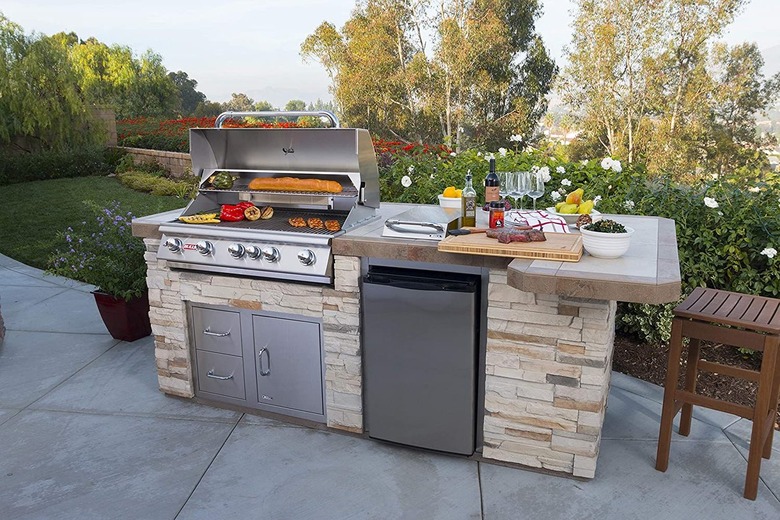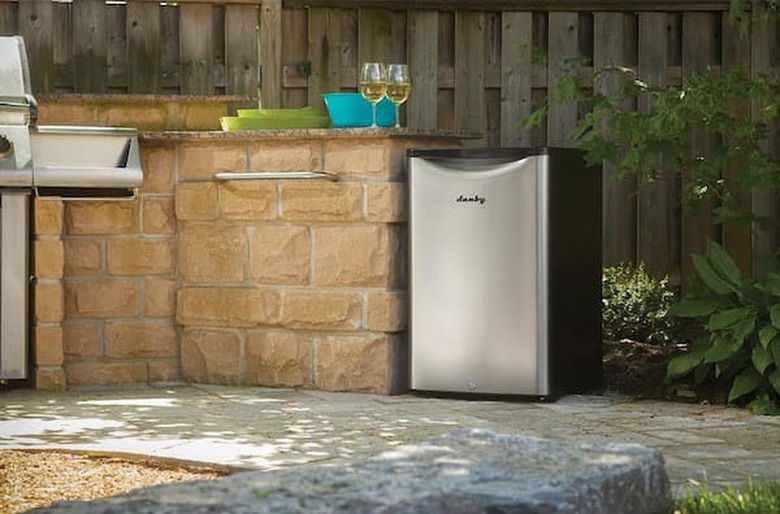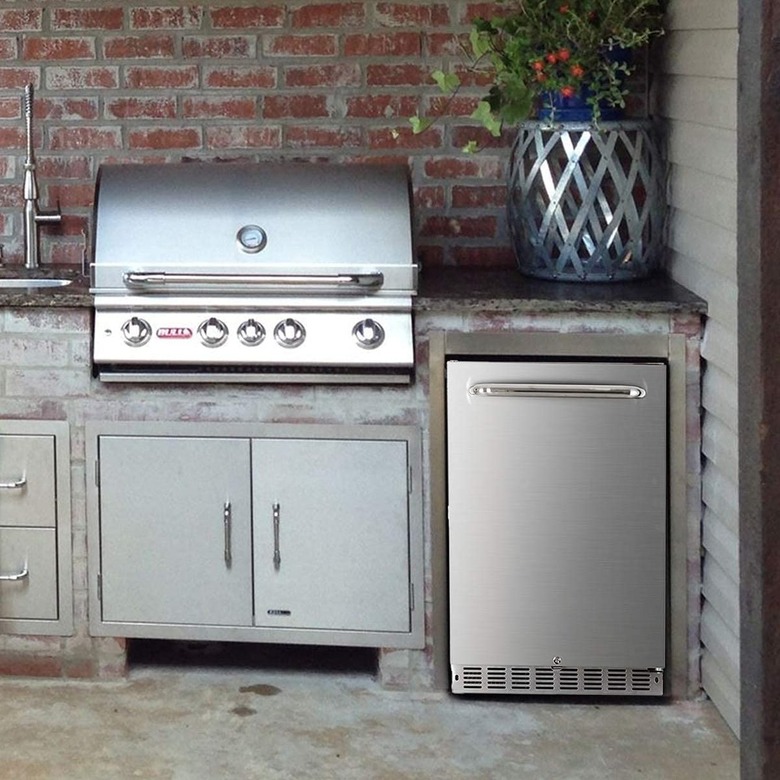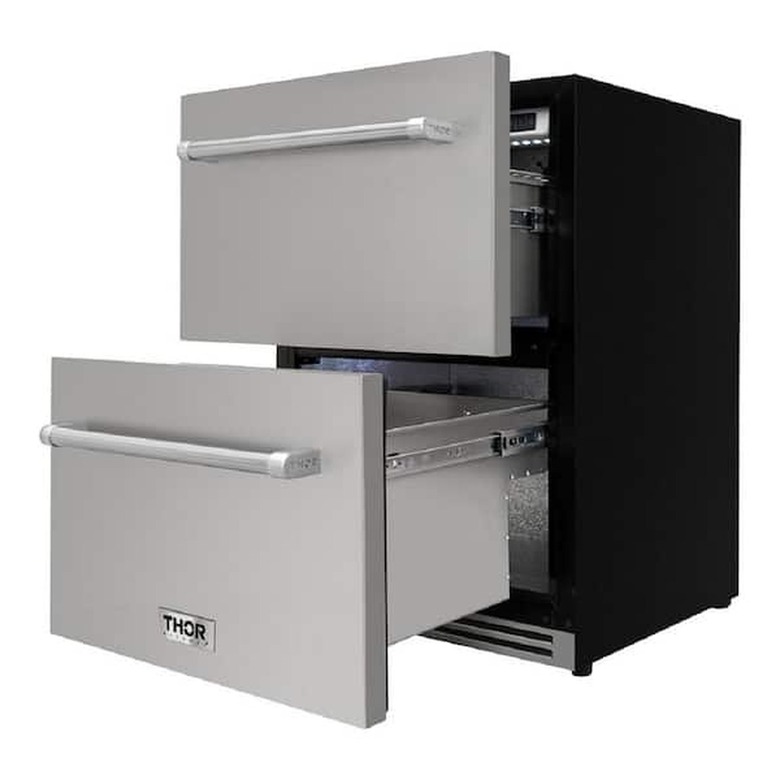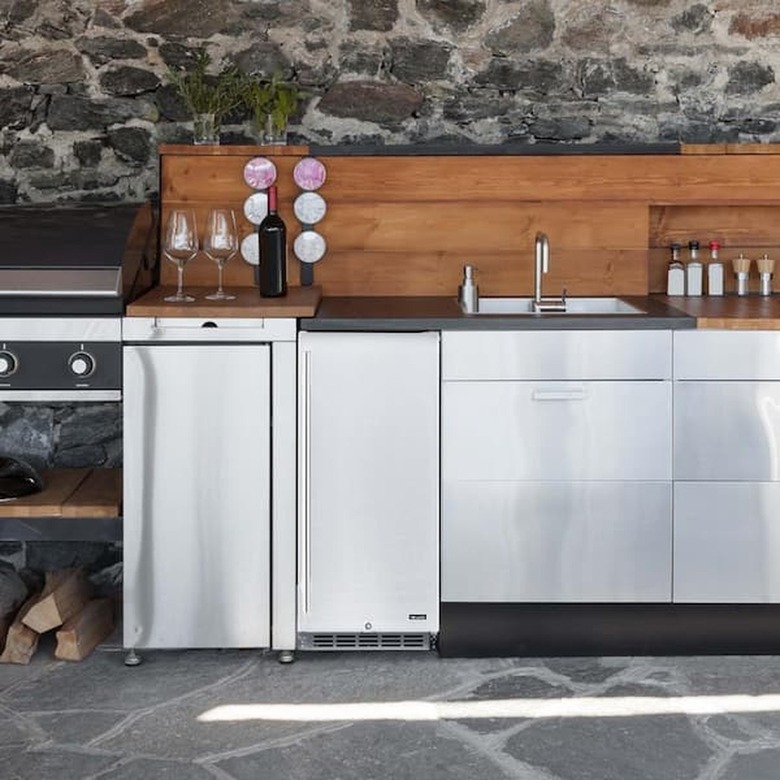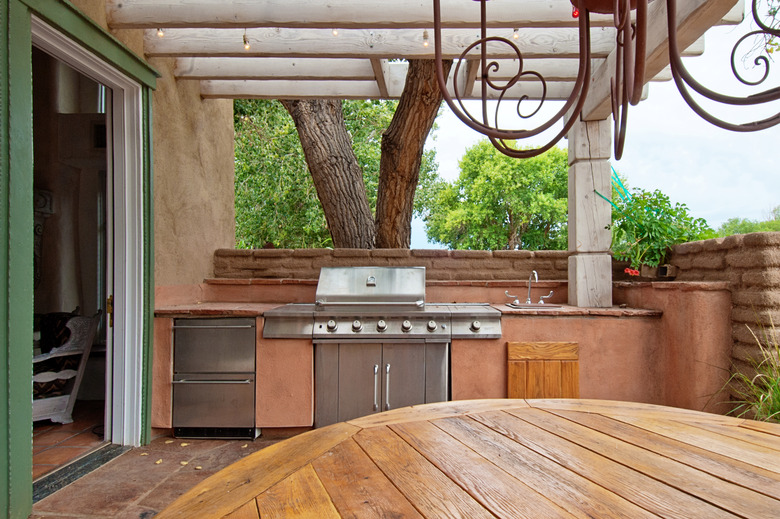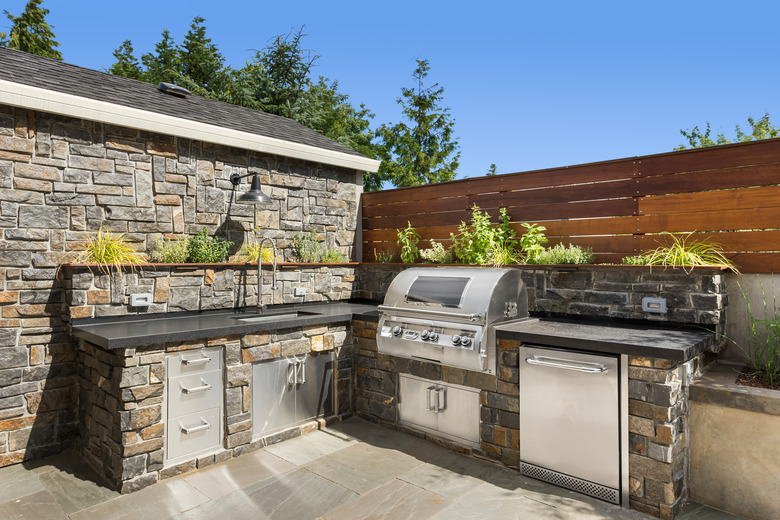The 5 Best Outdoor Refrigerators To Complete Your Space
We may receive a commission on purchases made from links.
An outdoor refrigerator is the ultimate accessory for your outdoor space. It allows you to keep cold beverages close at hand while storing meat and vegetables close to your grill. Be aware, however, that you can't just stick any old fridge outside and call it a day.
While planning your outdoor kitchen, you likely found many sink and countertop materials that work as well outside as they do inside. This is not the case with outdoor refrigerators. These refrigerators are built differently to provide better durability, insulation, and ventilation while standing up to an outdoor environment where dirt and debris are likely present. The best outdoor refrigerators or beverage refrigerators are the ones that can withstand outdoor use.
Here are our choices for the best outdoor refrigerators, tips on what to look for when you're buying, and how to maintain your outdoor fridge.
1. Bull Outdoor Stainless Steel Front Panel Refrigerator
1. Bull Outdoor Stainless Steel Front Panel Refrigerator
This outdoor fridge by Bull has 4. 4 cu. ft. of space to keep beverages and food ice cold, has a 304 stainless steel door, and the brand has a reputation of being long-lasting.
2. Danby Outdoor Refrigerator in Stainless Steel
2. Danby Outdoor Refrigerator in Stainless Steel
The Danby 4.4 cubic foot outdoor fridge is on castors, perfect for portability, and has a reversible door with a hidden hinge. This outdoor fridge will work for those who don't have an actual outdoor kitchen and just want a space to store their bevvies.
3. HCK Indoor/Outdoor Refrigerator
3. HCK Indoor/Outdoor Refrigerator
This spacious 5.12 cubic feet of storage capacity in the HCK indoor/outdoor fridge holds up to 161 standard 12 oz. cans. Equipped with LED lights, a self-locking mechanism, and outdoor-rated 304 Stainless Steel construction with a waterproof rating, this fridge is built to last for all your outdoor parties.
4.Thor Built-In Indoor/Outdoor Undercounter Double Drawer Refrigerator
4.Thor Built-In Indoor/Outdoor Undercounter Double Drawer Refrigerator
This Thor built-in Indoor/Outdoor Under counter refrigerator gives a seamless look to your outdoor kitchen. With an anti-fingerprint surface, a hidden control panel inside the top drawer, and plenty of space inside, this one is sure to be a good fit for your outdoor space.
5. NewAir Outdoor Cooler Fridge with Auto-Closing Door
5. NewAir Outdoor Cooler Fridge with Auto-Closing Door
Worried about critters or underage children snooping around your fridge? This NewAir outdoor cooler fridge has an auto-closing door with a lock that guarantees the contents of your outdoor fridge will only be consumed purposefully.
How to Choose an Outdoor Fridge
1. Stick With Stainless
When choosing an exterior finish for your outdoor refrigerator, it's best to stick with the tried and true stainless steel refrigerator. Refrigerators made from 304 stainless steel have a chromium content of 18 to 20 percent, which makes them resistant to rust and corrosion. This is crucial outside where you can't control the humidity level.
If your budget is tight, you can save a few dollars by going with a fridge with plastic exterior panels. Plastic gets brittle when exposed to UV light from the sun, however, and can become brittle when exposed to temperature changes. A stainless steel outdoor refrigerator can last five to 10 years. Simply put: Plastic refrigerators will not last as long.
2. Know the Size You Need and Where It Will Go
Used primarily for beverages and for prepped food for grilling, most homeowners find that they can use a much smaller refrigerator in their outdoor kitchen than they do inside. A standard outdoor refrigerator is 34 inches tall, 24 inches wide, and 24 inches deep. This makes it the perfect size for tucking under your countertop. Many models account for this and ventilate at the front of the appliance. A standard model provides 5.5 to 6 cubic feet of storage space.
You can also go smaller and opt for a compact refrigerator. These stand around 34 inches tall (some may be taller if they have wheels) so that you can install them neatly under your counter. They're also 24 inches deep. The width is smaller, however, at 15 inches. This reduces your internal storage space to around 3.3 cubic feet.
3. Decide Between Freestanding and Built In
You can also choose a freestanding refrigerator if you don't want to build in a fridge to a counter space (or you don't have one yet). Because they aren't designed to be built into a counter, these refrigerators have a standard rear ventilation system rather than ventilation at the front of the unit. You can stand your refrigerator at the end of your counter or move it elsewhere if you prefer as long as you leave air space around the unit.
You can use these refrigerators as built-ins if you really want to do so, but they're not designed for that. You'll need to provide at least 1/2 inch of air space around a freestanding refrigerator for proper ventilation, but this ruins any chance of a seamlessly integrated look. Freestanding units often cost a bit less but buy one only if you truly don't want a built-in.
4. Check the UL Rating
Outdoor refrigerators are exposed to the elements, which means rainwater could be a factor. Reputable manufacturers take great care to waterproof the electronics on outdoor appliances and weatherproof areas where water could cause a malfunction or a safety hazard. They use special materials where necessary and put them together in such a way to keep you safe and prevent rust from marring the refrigerator's appearance.
To know you're protected, it's important to look for a unit that is UL-listed (bearing the UL seal). This is another reason to avoid bargain shopping. If you go too cheap, your unit probably won't have a UL seal and may not truly be safe to use outdoors.
5. Decide Whether or Not You Want a Freezer
When shopping for an outdoor refrigerator, you'll need to decide if you want just the fridge or if you want a freezer as well. Adding a freezer increases both the cost of the appliance and its operating cost, but it also keeps ice handy if you're tending bar for your guests.
6. Choose a Fridge with an LED Light
An interior light is another important consideration, especially for nighttime hosting and cooking. Ideally, you should choose a refrigerator with LED lighting. LED lights are long-lasting, energy-efficient, and quite bright. They also stay cool when in use so they won't heat up if your kids insist on lingering while the refrigerator is open.
7. Determine Whether You Need a Lock
Many outdoor refrigerators also come with a lock, and this can be an important feature. A lock lets you store beer and other alcoholic beverages in your outdoor refrigerator without fear that you're unintentionally supplying the neighborhood minors with liquor. As a bonus it also keeps curious critters out of your fridge.
8. Glass vs. Metal Wire Shelves
You may have to choose between glass or metal wire shelves when refrigerator shopping, Both work well, so this largely comes down to personal choice. Open wire racks do improve airflow throughout the fridge but not enough that you're likely to see a difference in your electric bill. Glass shelves block airflow but are much better for storing small items.
Average Outdoor Refrigerator Costs
Average Outdoor Refrigerator Costs
For an outdoor refrigerator in the 3- to-6-cubic-foot range, expect to pay about $500. Of course, you could easily pay more depending on what features you choose and the brand you select. Freezers, ice makers, and other extras can add to the cost.
You can bargain shop if you wish, but doing so is not recommended. Clearly, you don't want to pay more than you have to, but bargains on outdoor refrigerators can mean shortcuts that affect safety. Make sure you're getting a fridge that is truly meant for outdoor use and compare warranties.
Efficiency and Operating Costs for an Outdoor Fridge
Efficiency and Operating Costs for an Outdoor Fridge
The air temperature around your refrigerator affects how well it works. Indoors, you likely use heat and air conditioning to maintain a fairly steady temperature all year. Outdoor refrigerators don't live in this controlled environment, and this may be apparent on your electric bill.
If you keep your outdoor refrigerator out of direct sunlight and provide adequate ventilation, it costs an average of $35 to $50 a year to operate it. This number is not carved in stone and can fluctuate widely. If you have an extremely hot summer, the cost of running your outdoor refrigerator will climb. To keep your utility bills as low as possible, look for an outdoor refrigerator that bears the United States Environmental Protection Agency's ENERGY STAR logo.
Outdoor Refrigerator Limits
Outdoor Refrigerator Limits
It's important to understand that an outdoor refrigerator has its limits. These outdoor products simply aren't designed to operate in temperatures below 40 degrees Fahrenheit. If you live in the Deep South where it's warm all winter, this may not be an issue for you. If your outdoor kitchen is in the North, however, you'll need to empty your outdoor refrigerator in the fall.
Fortunately, preparing your refrigerator for winter is an easy job. You'll simply empty the fridge, turn it off and unplug it. Leave the door slightly ajar so moisture and mildew don't build up inside the unit over the winter. If you opted for a freestanding refrigerator instead of tucking a smaller unit under your countertop, you'll need to place a loose cover over the appliance.
How to Maintain an Outdoor Fridge
How to Maintain an Outdoor Fridge
Because you played it safe and got a refrigerator designed for outdoor use, you'll need to do very little maintenance to keep your refrigerator happy. Here's what you need to do to maintain your outdoor fridge to make it last:
- Wipe down both the inside and outside of your outdoor refrigerator with warm water and a mild detergent, like dish soap.
- Wash the refrigerator racks in your kitchen sink as needed.
- Clean the compressor and coils. Most outdoor refrigerators are designed to be tucked under a countertop. As such, the compressor and coils on your unit are likely located on the front of the appliance. Keep these components clean and free of dust and debris. You can sweep away any leaves or other debris from the front of the unit and dust off the coils with a clean cloth. If you're having trouble, break out the shop vac and clean the coils with the brush attachment.
- Give the fridge a good cleaning with warm, soapy water before you turn it on and reload it in the spring. (If you live in an area where winter temperatures drop below 40 degrees Fahrenheit, you won't use your fridge over the winter.
